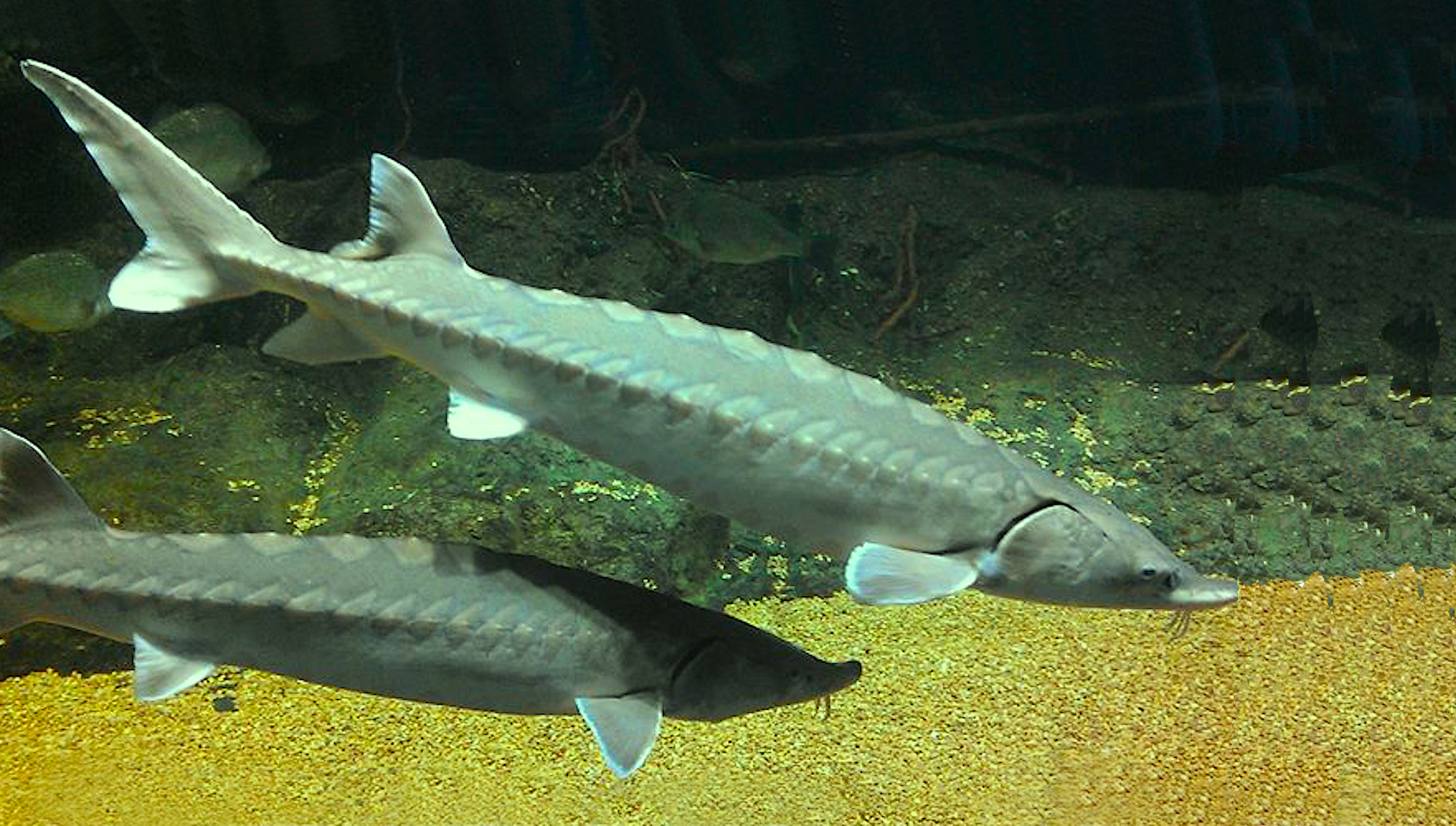Can We Use Off-the-Shelf Sonar to Count Atlantic Sturgeon?

Low-cost technology could allow for regionwide comparisons of daily numbers of the species.
Research Need
Atlantic sturgeon (Acipenser oxyrinchus) are endangered fish inhabiting rivers, estuaries, and marine environments along the Atlantic coast of North America, including the waters of North Carolina. Hatched in fresh water, these fish spend most of their adult lives in the ocean and then return to freshwater systems to spawn and lay eggs. Once present in large numbers, these animals are now off-limits to fishing and share the same waters and environments where popular fish species thrive.
To better understand their changing population levels, scientists need to count spawning Atlantic sturgeon and their offspring. Tag and recapture methods — using either simple streamer tags or more sophisticated electronic tags — have been the go-to methods to follow the fish, but these techniques are resource-intensive and can harm the fish if conducted incorrectly.
It would be nice to have a method to passively observe and count these animals on a regular basis. And what if you could do this without getting out of the boat? Better yet, what if you could walk into Bass Pro Shops and purchase an off-the-shelf side-scan sonar unit that can “see” individual Atlantic sturgeon under the boat?
What did they study?
Scientists equipped a boat with a Humminbird side scan sonar and surveyed nine sections of Atlantic sturgeon spawning grounds on the uppermost portion of the Savannah River in Georgia. On each of 50 occasions from August to November 2017, researchers laid down a strip of imagery that they could analyze in the lab.
The team focused on counting objects in the imagery that looked like Atlantic sturgeon (based on shape, dorsal fin and tail structure, shadow, and other factors) that were roughly 4 feet long, the minimum size capable of spawning. Computer modeling then used the fish counts to estimate the total number of spawning Atlantic sturgeon in the study area.
What did they find?
The team observed at least one Atlantic sturgeon on each of the 50 sampling runs and estimated maximum daily numbers of spawners at 35 to 55 fish.
Anything else?
The flow rate of the Savannah River had an impact on Atlantic sturgeon detections. Specifically, as the flow rate increased, the chance of detecting fish decreased. Although scanning while moving upstream or downstream didn’t affect the count, downstream imagery was clearer and made for easier fish counts.
So what?
The study provides evidence that off-the-shelf side-scan sonar is capable of monitoring daily abundance of spawning Atlantic sturgeon in shallow river systems. The authors encourage others monitoring sturgeon to further experiment with this low-cost technology, which could allow for region-wide comparisons of the daily abundance of Atlantic sturgeon.
Reading
Vine, Joshua R., Kanno, Yoichiro, Holbrook, S. Chad, Post, William C., Peoples, Brandon K. 2019. Using Side-Scan Sonar and N-Mixture Modeling to Estimate Atlantic Sturgeon Spawning Migration Abundance. North American Journal of Fisheries Management 39:939–950. DOI: 10.1002/nafm.10326.
The South Carolina Department of Natural Resources, through mitigation funds from the Savannah Harbor Expansion Project, supported this research.
Summary compiled by Scott Baker
Lead photo courtesy of NOAA
The text from Hook, Line & Science is available to reprint and republish at no cost with this attribution: Hook, Line & Science, courtesy of Scott Baker and Sara Mirabilio, North Carolina Sea Grant.



